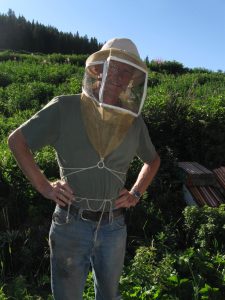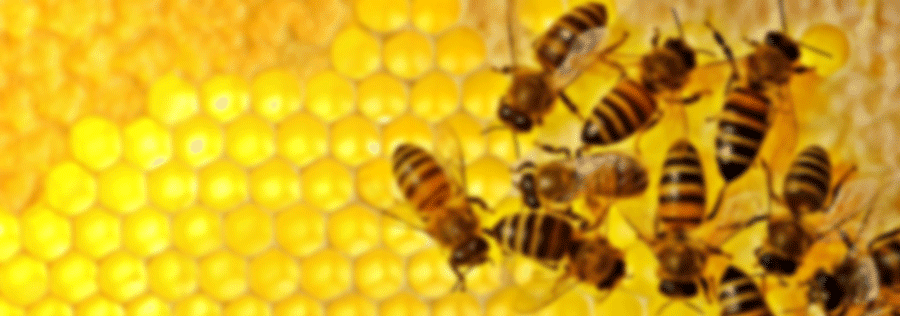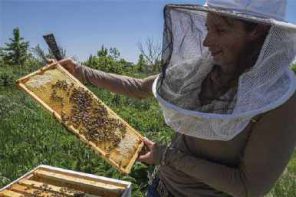
Ed Colby
Get On Board!
coloradobees1@gmail.com
By: Ed Colby
The Good Samaritan
The pot grower down the road told me his bees are doing fabulous. I asked him how his mites were doing. “What mites?” he queried.
I said, “We just had the Colorado State Beekeepers meeting practically in your front yard a couple of weeks ago. You could have learned all about Varroa mites.”
“I heard about that meeting,” he said, “but we were gone that weekend.”
I advertised the hell out of this meeting, and I have other beekeeper neighbors who know nothing about bees but were still too busy to learn when they had a chance.
Well, my Colorado River Valley bees aren’t doing fabulous. Today is July 9, and we haven’t seen a raindrop since early June. The mercury tops out in the low nineties. We’ve had wildfires, slurry bombers and helicopter water drops.
Strong hives made a little honey, but I don’t have very many of those. I split every hive I could in April and May. The bees mostly missed the dandelions due to stormy weather, and the first cutting of alfalfa yielded little nectar.
Right now the little darlings can’t even seem to find pollen. I’m feeding pollen substitute to maintain healthy brood and keep Nosema at bay.
Derrick told me he only quit feeding syrup three weeks ago. He got his bees strong enough that they were able to make some honey. Me? I haven’t got a full honey super on any of 90 colonies. Maybe there’s a lesson here.
Meanwhile, my two high altitude yards continue to plug out honey supers. Diversification is not a bad thing.
At a recent bee meeting, Derrick did a slide show on his strategies for successful commercial beekeeping. He threw in some slides of semi loads of bees stuck axle-deep in the mud during this year’s rainy California almond season. Just when the situation looked perfectly hopeless, a guy showed up with a backhoe and tried one way after another to extricate Derrick’s mess. As soon as he finally winched the trucks to drier ground, he vanished.
Next day Derrick tried to find his Good Samaritan, but all he had to go on was a first name – Jose.
When he finally found his man, Derrick couldn’t get him to take “a couple of hundred bucks.” Jose didn’t do it for the money, he explained. He just wanted to help a stranger.
This story should be in the Bible. Maybe it already is.
I went to this meeting of the Colorado Professional Beekeepers Association (CPBA) for a couple of reasons: One, to offer an olive branch from my own Colorado State Beekeepers Association (CSBA). The CPBA recently broke away from the CSBA over philosophical differences, and some bad blood. Two, to carry the gospel that neonicotinoid pesticides are bad for pollinators.
Lyle leads the CPBA, and he’s a big man with a big message: Varroa mites are the culprits driving dramatic honey bee losses. Forage loss is a huge problem. Pesticides are a relatively minor nuisance. He’s not too fond of backyard beekeepers – or any beekeepers, for that matter – who allow mites to decimate their bees.
He and I share some common ground, and we have some differences.
The featured speaker was Dick Rogers, an entomologist and research manager from Bayer, a company that manufactures neonics. It piqued his interest when I announced that the CSBA joined with the American Beekeeping Federation and the American Honey Producers Association in signing a petition to the EPA to register neonic seed coatings as pesticides.
Arathi Seshadri, a biologist from Colorado State University whose work is supported financially by the CPBA, spoke on controlling American foulbrood within the guidelines of the new animal antibiotic regulations.
Lyle argued that the neonics are not a problem for honey bees, and that neonics in fact reduce the need for spray from chemicals that do harm bees.
I couldn’t let this go unchallenged, so I peppered Dick – the Bayer guy – with questions about research demonstrating that the neonics are particularly hard on native pollinators. Well, he just hadn’t seen anything that backed this up. I mentioned a Swedish study on seed-coated canola that showed dramatic decline of bumblebees and solitary bees. He was unfamiliar with that study.
When an industry researcher states that Bayer studies bumblebees’ response to neonics, and everything looks rosy, but he hasn’t heard about an important independent research project on the same topic, I start to wonder.
I referenced Marla Spivak’s remarks at the 2013 Western Apiculture Society conference, in which she stated that native pollinators tend to be more sensitive to pesticides than honey bees, due at least in part to the pesticide-buffering effects of vitellogenin produced in the heads of nurse honey bees. Arathi the CSU biologist said that I was misinterpreting Marla’s remarks.
I started feeling a little picked on, even though I asked for it. At one point I said, “Look, I didn’t come here to start a food fight.”
After the meeting, Dick and I spoke in private. When I asked about soil contamination from neonic-treated seeds, he said the neonics bind to rocks in the soil and biodegrade over time. He told me he couldn’t explain why so much peer-reviewed research cast the neonics in an unfavorable light.
We all want the truth, the whole truth and nothing but the truth, right? So we need to be careful that we don’t embrace conclusions that seem reasonable and true, only to work backwards, cherry picking evidence to back those conclusions.
We need to listen to and talk to people with whom we don’t agree. How else are we going to bring them to the light?
Later, Lyle and I chatted outside the meeting room on a hot July afternoon in Salida, Colorado. I can always learn something from Lyle. A stone’s throw away, boaters and floaters frolicked in the Arkansas River. The gal Marilyn tugged on my arm. “Let’s go,” she said finally. “We need to jump in the river.”
Ed Colby practices beekeeping in Aspen Mountain, Colorado, where he lives with his partner, Marilyn.











